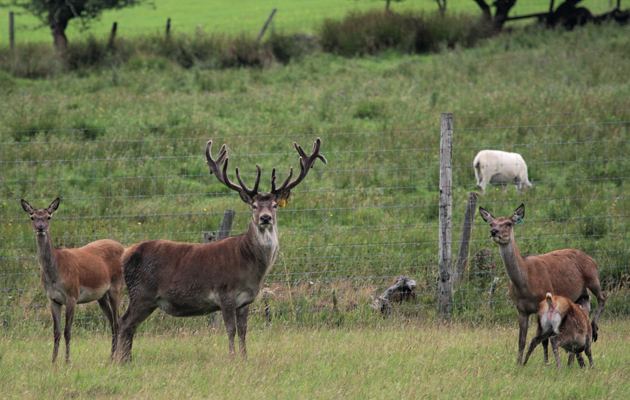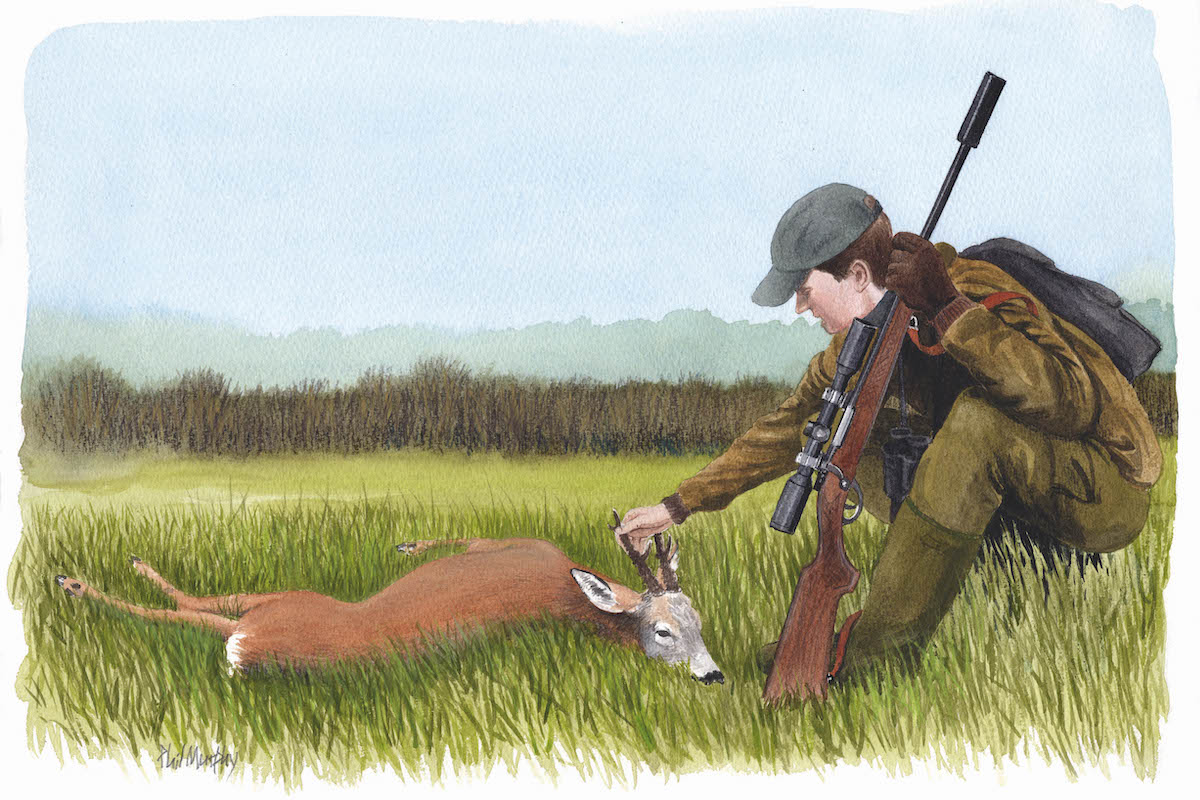How to spot TB in deer
Jon Snowdon reveals how to spot the tell-tale signs of deer infected with tuberculosis and what you can do to stop its spread

The first recorded instance of tuberculosis having been transferred from a cat to a human was reported recently. I wonder if this surprised any of us whose work involves animals. I have to say, it didn’t surprise me.
TB, or to be exact, bovine TB, is what is classed as a zoonotic disease; these are diseases that can be transferred from animal to man and vice versa.
TB is one of the major notifiable diseases; this means that if anyone suspects they have animals showing signs of TB or, when preparing a carcase, there are signs of infection, it is a legal requirement to report it to the Animal Health Divisional Office.
On reporting the suspicion, you would likely be asked to take a sample, or possibly the AHDO would come to you to inspect the problem. In the meantime, the carcase and viscera should be isolated to prevent further cross-contamination and all the equipment should be cleaned and sterilised.
A frequently asked question during larder courses and demonstrations is about the prevalence of disease in wild deer, particularly TB. On the whole, general opinion is that it is not a large percentage of the population; however there are hotspots, particularly in the south west of England and Wales, though the disease is seen more frequently in farmed or park deer than elsewhere.
Once again, this is understandable, with a large population of deer living on a restricted area, disease is more likely to be spread more swiftly. Tuberculosis in fallow deer is certainly giving cause for concern in some areas. Again this is not surprising as red and fallow deer are seen in herds, and in the case of fallow these herds can be particularly large, added to which, fallow cover large territories making it difficult to estimate and control the population.
The other species in the UK, roe, muntjac and Chinese water deer, are more solitary species and they tend to keep to woodland and foraging on the woodland margins.
At this point, before you get put off venison for life, I should mention that I have never seen TB in roe deer, or indeed any of the species I have dispatched, and that includes both park and farmed deer. Here at Greenlee, we check every single carcase very carefully and all animal foodstuffs in the UK are thoroughly inspected before being allowed on sale.
Spotting tuberculosis in deer
There seems to be a view that TB may be occurring at a higher level in wild deer than was originally thought and it certainly is in the hotspots mentioned above. It may also be sneaking through the back door of game-handling establishments, who purchase carcases from untrained stalkers. In which case, both parties would be committing an offence, except under exceptional circumstances.
So, how exactly do you diagnose TB? Well, the short answer is that you are not expected to, but these tips will help you spot it.
Observing your chosen animal before dispatch, looking for anything abnormal. For example, a roe deer in winter coat and antlers in summer would be very unusual and would lead me to suspect a disease before I even dispatched the animal.
I always don my protective rubber gloves before an external inspection, making sure that the animal was in good health for the time of year. Animals coming out of winter will obviously not weigh as much and their coat may not look as tidy, which would be perfectly normal for that time of year. Check the hooves, mouth and feet for any sign of disease – and bear in mind that foot and mouth is another notifiable disease.
Next, you can inspect the viscera and lymph glands for abnormality when you gralloch the deer. Among them are the mesenteric glands in the intestines, the portal in the liver, the mediastinal in the lungs, the bronchial in the trachea (or wind pipe), the submaxillary under the jaw and the retropharyngeal in the throat. Occasionally, the shot may make inspection of one or two of these glands impossible, but the others can all be checked.
The general opinion is that if the mesenteric or submaxillary glands are swollen, pus-filled, watery or firm and cheesy then there is the suspicion of TB and legally it must be reported. To ignore these signs would be a public health risk.
During inspection, the lungs should be spongy and without any lumps or abscesses. There may be white or greyish edges at the base of the lungs, which is a sign of lungworm. The heart should be encased within the pericardium, which should be lubricated. The liver should be normal without any white scars on the surface, which is a sign of liver fluke, or swelling which may be a bacterial infection from the soil. The presence of parasites like lungworm and liver fluke are not an uncommon sight, but in general, parasites are not a threat to public health. However, any sign of parasites must be reported on the declaration you attach to the carcase and the organ disposed of.
What can you do?
Who are the likely culprits consistently ignoring the food safety regulations? Certainly that scourge of the countryside, the poachers; they do not care what they do in regards to public safety, the shooting season or animal welfare. It is highly unlikely they would inspect the carcase in the correct manner. I suppose we also have to accept that one or two DSC-trained hunters ignore what they have been taught, simply because they can’t be bothered, and due to their action a few carcases may get into the food chain that shouldn’t.
If you know of either an approved game-handling establishment that is handling illegally shot game or some of those irresponsible and dangerous people who go about firing lead around the countryside without legal permission, then do not hesitate to report them, anonymously if you prefer. The results, once intent is proved, should see the poacher lose his FAC for life, if he is indeed using a legal method of dispatch, and the game-handling establishment supplying the money for the carcase will also lose their license – and so they should. In doing so you make the country a much safer place and there will be less chance of diseased meat going into the food chain.











